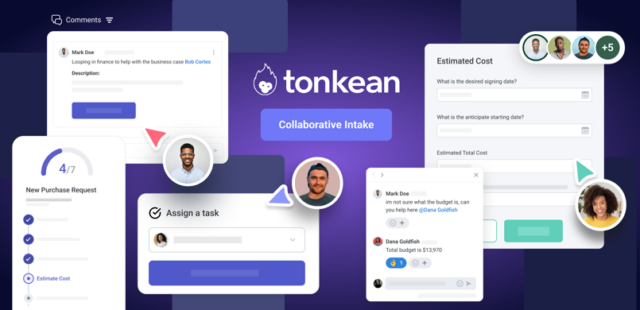Poor demand planning expected to drive massive errors this Black Friday
By: Robert Byrne, VP Supply Chain Solutions at E2open
The festive season is the season for stuffing. Turkeys with delicious fillings, socks above the fireplace with presents and warehouses with enough stock to meet customer demand during shopping extravaganzas like Black Friday and Cyber Monday.
As retailers gear up for their biggest and potentially most lucrative shopping week of the year, the global manufacturing industry faces the ultimate supply chain dilemma. Businesses don’t want to fail to meet orders. But nor do they want warehouses full of unsold stock tying up cash. How can they find the optimal balance?
Proceed with caution
Businesses generally lean towards the latter to mitigate the risk of stock-outs during periods of uncertainty. As you read this (and hopefully you’re sitting comfortably), $10 trillion worth of global inventory is stockpiled in depots, shops and warehouses all over the world. This level of inventory could, in theory, provide two years’ worth of wages to the 2.4 billion people living in poverty across the world. It could also give manufacturers the opportunity to close shop or halt production for a whole year if consumption trends remained constant.
Too much of a good thing
One of the biggest drivers of oversupply is a phenomenon known as ‘incremental innovation,’ whereby a series of small improvements are brought to a company’s existing products and services.
While innovation across all sectors is undeniably the force behind the Fourth Industrial Revolution, it is also driving oversupply and wasteful production. 94% of new products land up in the tail (slowest moving items) in their first year and even fewer break out to become fast movers, according to the latest E2open Forecasting and Inventory Benchmark Study.
This rate of innovation is not only giving retailers and inventory planners headaches, it also has a significant environmental impact. The production of unused inventory requires more than 10 gigatons of carbon dioxide, equivalent to approximately 1.75 billion car-years, as well as 1.6 trillion cubic meters of water, which represents about 40% of annual global water consumption, which is bad for the planet, bad for reputation, and bad for profits.
Outdated systems driving forecast error
When it comes to managing extraordinary periods in retail like Black Friday or Cyber Monday, most inventory planners agree that preparation is key. But the study also found that oversupply is a result of inadequate demand planning. With 80% of safety stock resulting from forecasting errors, it’s clear that the traditional approach to demand planning, which relies on seasonal patterns and historical data sets to predict sales, belongs in the past.
That’s why companies are increasingly investing in new technology like demand sensing to improve forecasting accuracy. However, as is often the case with many buzzwords, there is no universal agreement over the true meaning of ‘demand sensing’. So let’s explore one successful interpretation.
Here is a simple but useful analogy. Ask a planner using a traditional demand planning approach to determine how much milk to stock at a grocery store and they will look at how many cartons were sold during the same week over the previous couple of years. Demand sensing, on the other hand, looks at how much milk is already in the refrigerator, and factors in variables such as increased consumption due to university students being home for the holidays; thus, reducing demand near campus and increasing it near places of residence.
Rethinking what’s possible in the pursuit of planning excellence
Demand sensing is particularly useful when it comes to planning for major events like Black Friday, as it leverages all the benefits of Artificial Intelligence, Machine Learning and real-time internal and external data analysis. This allows retailers and manufacturers to forecast near-term daily demand, taking into account all available current information on inventory levels, recent shipments, open orders, customer ordering behaviour and any other factors that could affect demand.
As a result, over the last five years, companies using E2open smart applications have consistently enjoyed a 53% reduction in extreme forecasting errors. For example, New York-based beauty company Avon was faced with the challenge of forecasting and pre-building inventory several months prior to the start of a campaign, and only having several weeks to respond to real demand, which was often drastically different. They partnered with E2open to implement a supply chain solution that replaced inefficient systems, reduced inventory and improved profitability. With the E2open smart applications, processes that used to take an entire calendar year now happen in a matter of days and Avon now has complete visibility across their end-to-end supply chain, resulting in better decision making.
With CEOs increasingly turning to supply chain to drive digital transformation, differentiation and profitability, accuracy matters more than ever. Ultimately, the quality of every business decision ties back to the quality of one or more of its forecasts.
As retailers gear up for their biggest and potentially most lucrative shopping week of the year, the global manufacturing industry faces the ultimate supply chain dilemma. Businesses don’t want to fail to meet orders. But nor do they want warehouses full of unsold stock tying up cash. How can they find the optimal balance?
Proceed with caution
Businesses generally lean towards the latter to mitigate the risk of stock-outs during periods of uncertainty. As you read this (and hopefully you’re sitting comfortably), $10 trillion worth of global inventory is stockpiled in depots, shops and warehouses all over the world. This level of safety stock could, in theory, provide two years’ worth of wages to the 2.4 billion people living in poverty across the world. It could also give manufacturers the opportunity to close shop or halt production for a whole year if consumption trends remained constant.
Too much of a good thing
One of the biggest drivers of oversupply is a phenomenon known as ‘incremental innovation,’ whereby a series of small improvements are brought to a company’s existing products and services.
While innovation across all sectors is undeniably the force behind the Fourth Industrial Revolution, it is also driving oversupply and wasteful production. 94% of new products land up in the tail (slowest moving items) in their first year and even fewer break out to become fast movers, according to the latest E2open Forecasting and Inventory Benchmark Study.
This rate of innovation is not only giving retailers and inventory planners headaches, it also has a significant environmental impact. The production of unused inventory requires more than 10 gigatons of carbon dioxide, equivalent to approximately 1.75 billion car-years, as well as 1.6 trillion cubic meters of water, which represents about 40% of annual global water consumption, which is bad for the planet, bad for reputation, and bad for profits.
Outdated systems driving forecast error
When it comes to managing extraordinary periods in retail like Black Friday or Cyber Monday, most inventory planners agree that preparation is key. But the study also found that oversupply is a result of inadequate demand planning. With 80% of unused stock resulting from forecasting errors, it’s clear that the traditional approach to demand planning, which relies on seasonal patterns and historical data sets to predict sales, belongs in the past.
That’s why companies are increasingly investing in new technology like demand sensing to improve forecasting accuracy. However, as is often the case with many buzzwords, there is no universal agreement over the true meaning of ‘demand sensing’. So let’s explore one successful interpretation.
Here is a simple but useful analogy. Ask a planner using a traditional demand planning approach to determine how much milk to stock at a grocery store and they will look at how many cartons were sold during the same week over the previous couple of years. Demand sensing, on the other hand, looks at how much milk is already in the refrigerator, and factors in variables such as increased consumption due to university students being home for the holidays; thus, reducing demand near campus and increasing it near places of residence.
Rethinking what’s possible in the pursuit of planning excellence
Demand sensing is particularly useful when it comes to planning for major events like Black Friday, as it leverages all the benefits of Artificial Intelligence, Machine Learning and real-time internal and external data analysis. This allows retailers and manufacturers to forecast near-term daily demand, taking into account all available current information on inventory levels, recent shipments, open orders, customer ordering behaviour and any other factors that could affect demand.
As a result, over the last five years, companies using E2open smart applications have consistently enjoyed a 53% reduction in extreme forecasting errors. For example, New York-based beauty company Avon was faced with the challenge of forecasting and pre-building inventory several months prior to the start of a campaign, and only having several weeks to respond to real demand, which was often drastically different. They partnered with E2open to implement a supply chain solution that replaced inefficient systems, reduced inventory and improved profitability. With the E2open smart applications, processes that used to take an entire calendar year now happen in a matter of days and Avon now has complete visibility across their end-to-end supply chain resulting in better decision making.
With CEOs increasingly turning to supply chain to drive digital transformation, differentiation and profitability, accuracy matters more than ever. Ultimately, the quality of every business decision ties back to the quality of one or more of its forecasts.











